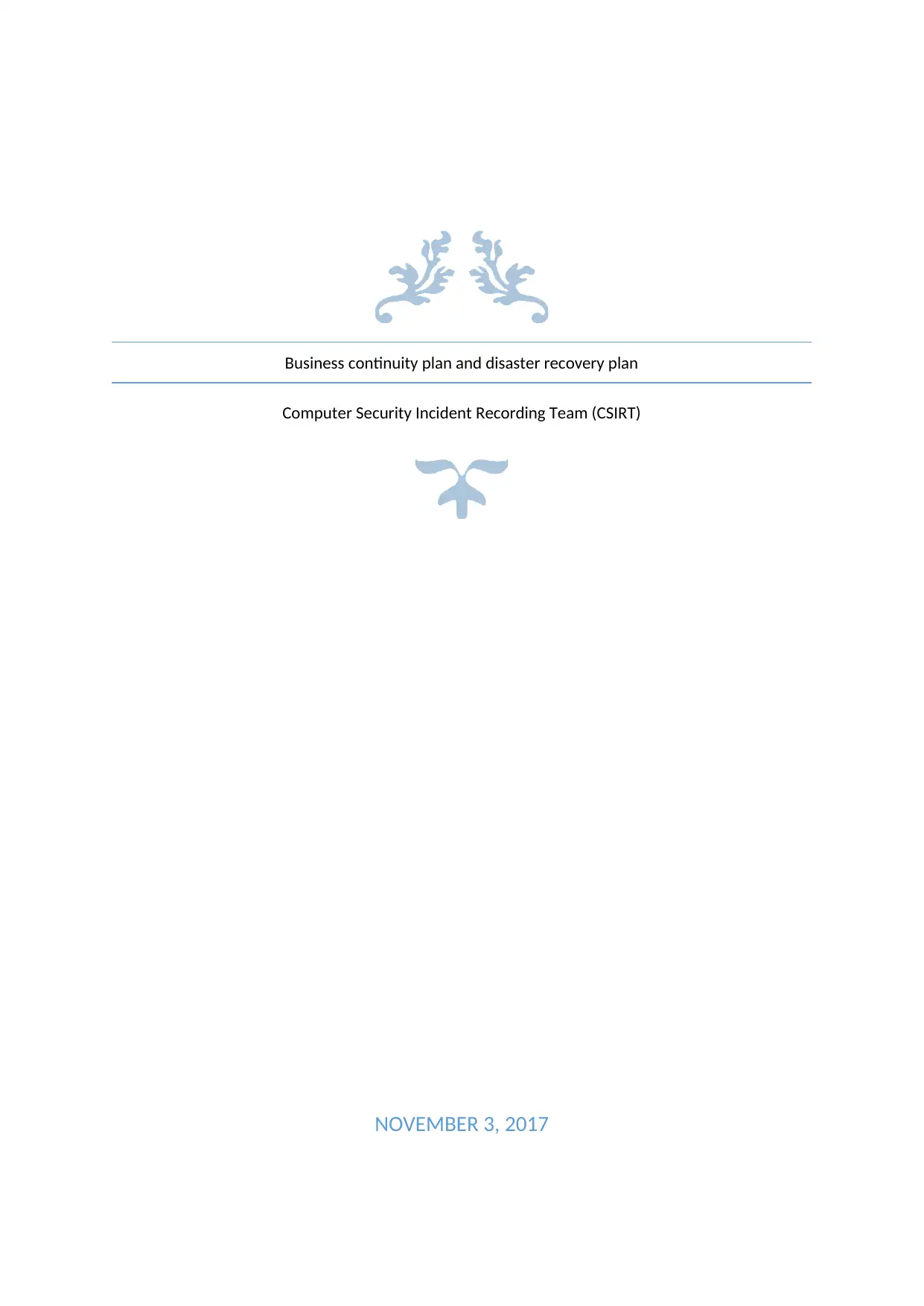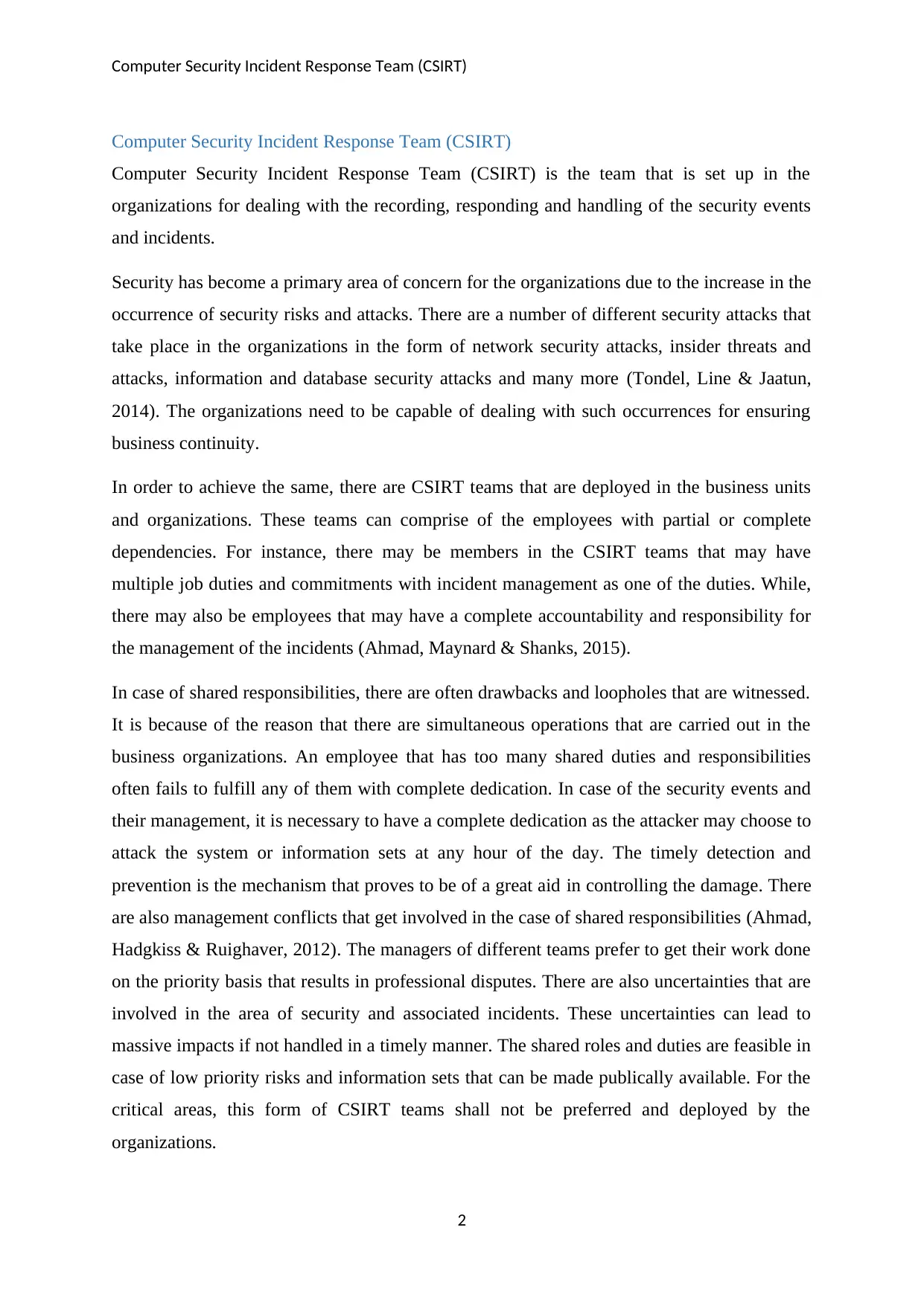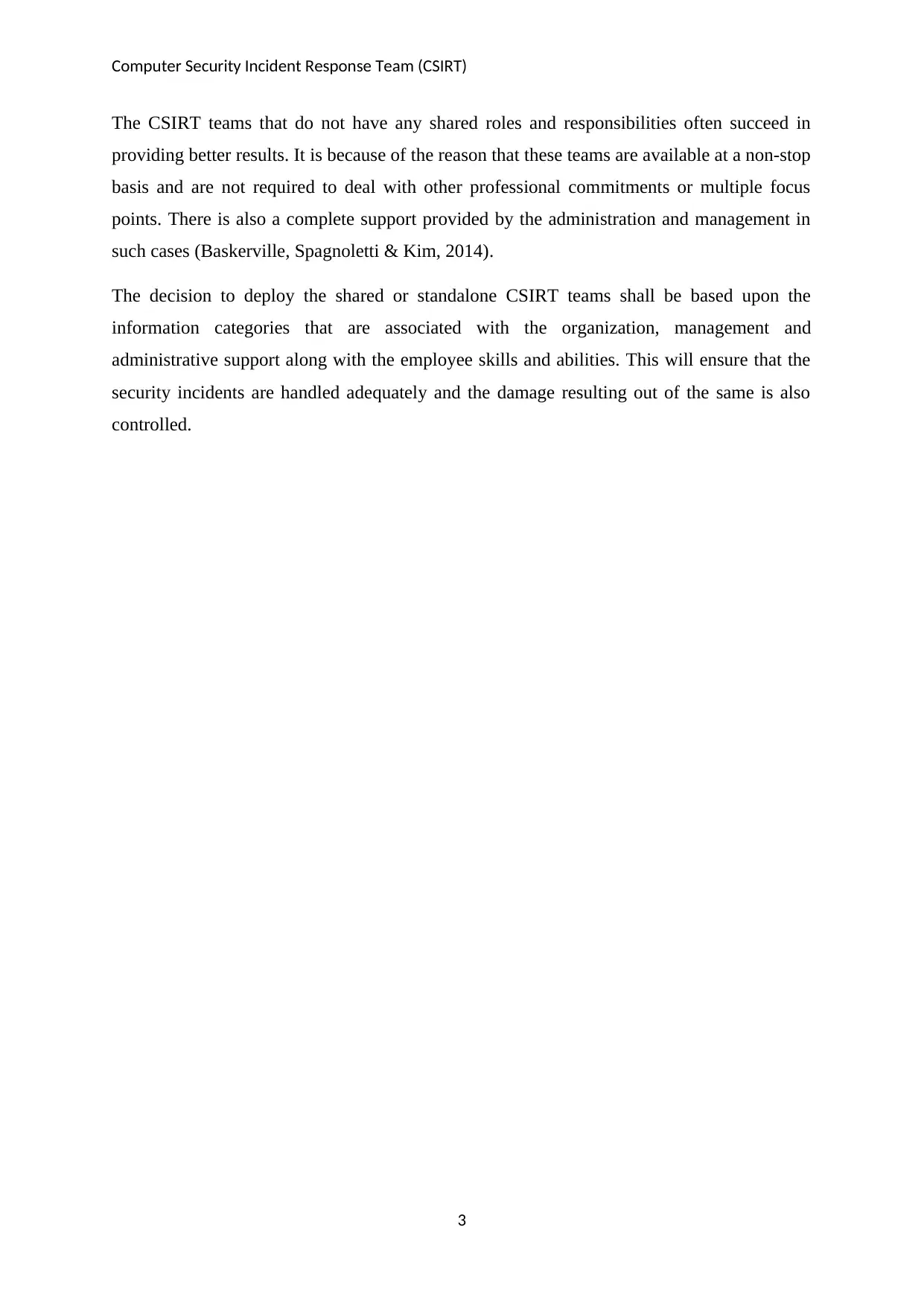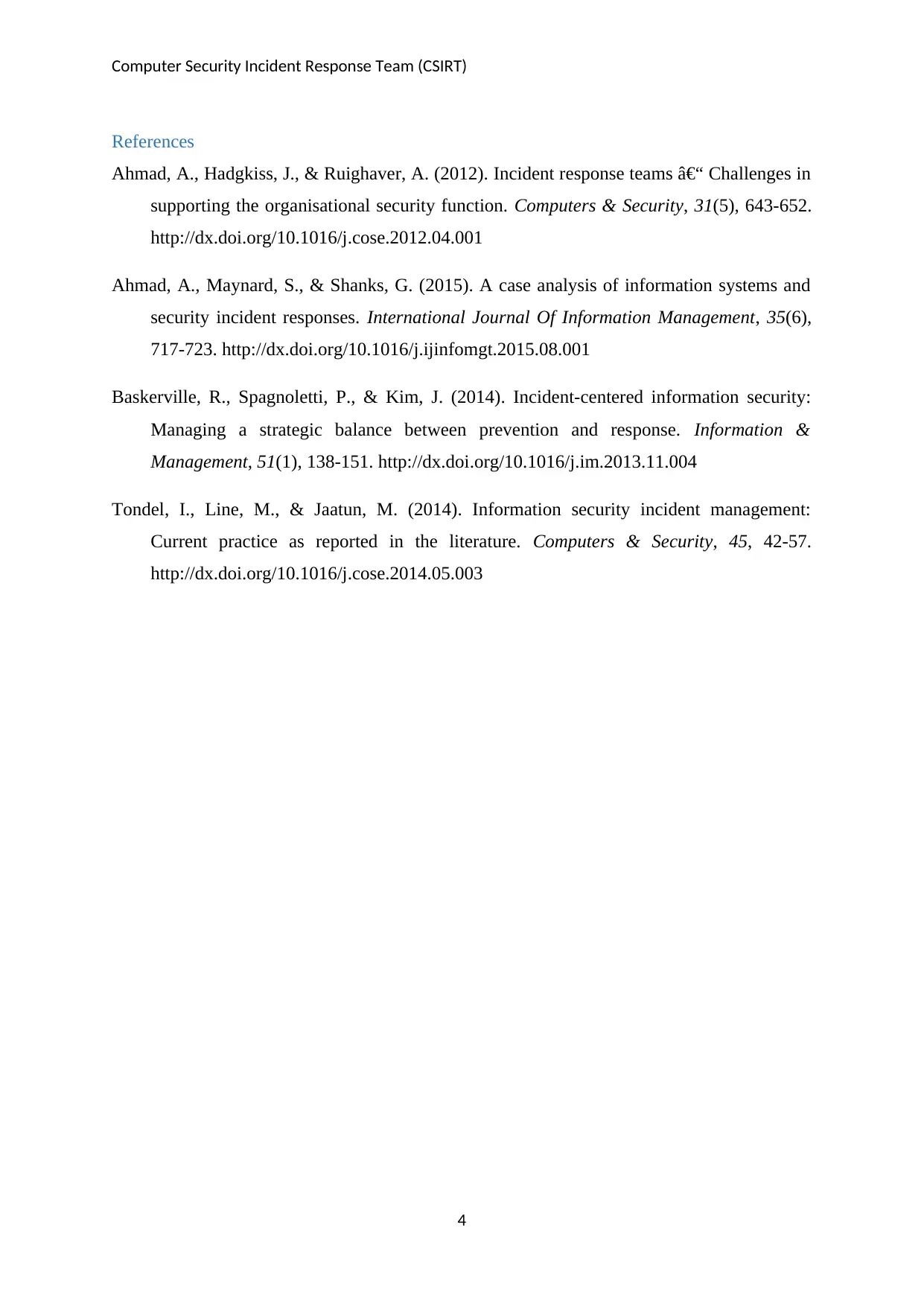CSIRT: Business Continuity Plan and Disaster Recovery Plan Report
VerifiedAdded on 2020/04/21
|5
|800
|65
Report
AI Summary
This report focuses on the Computer Security Incident Response Team (CSIRT) and its crucial role in organizational security. It examines the importance of CSIRT in addressing security incidents, including network attacks, insider threats, and information breaches. The report emphasizes the need for robust business continuity and disaster recovery plans to mitigate the impact of security events. It discusses the structure of CSIRT teams, comparing shared versus standalone responsibilities, and highlights the advantages of dedicated teams. The document underscores the significance of timely detection and prevention in controlling damage from security attacks and stresses the importance of management and administrative support. It concludes by emphasizing that the choice between shared and standalone CSIRT teams should depend on organizational factors like information categories, management support, and employee skills. The report references several academic sources that support the findings.
1 out of 5






![[object Object]](/_next/static/media/star-bottom.7253800d.svg)